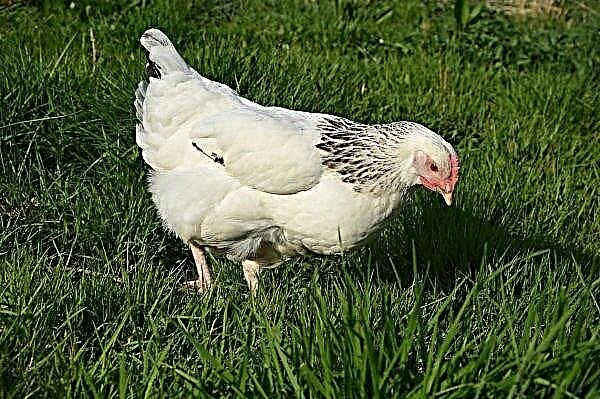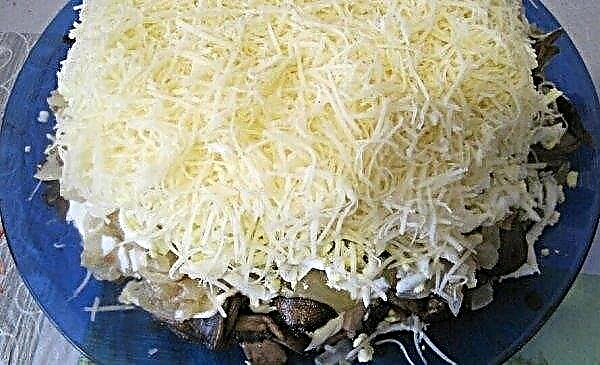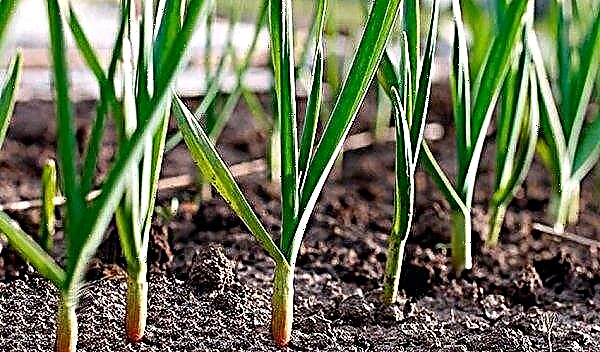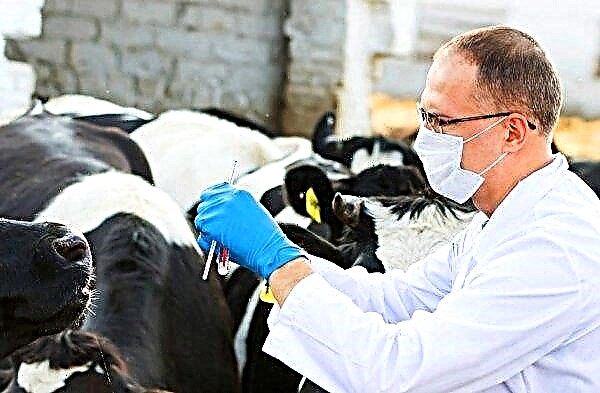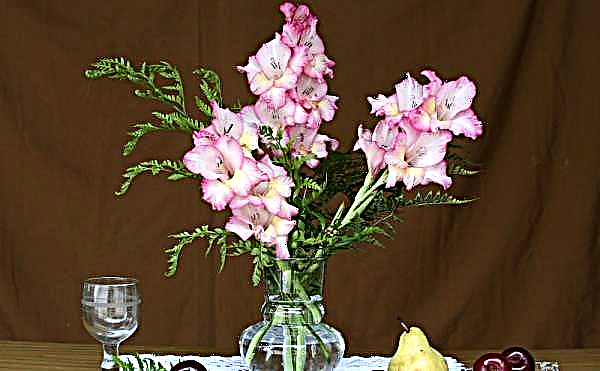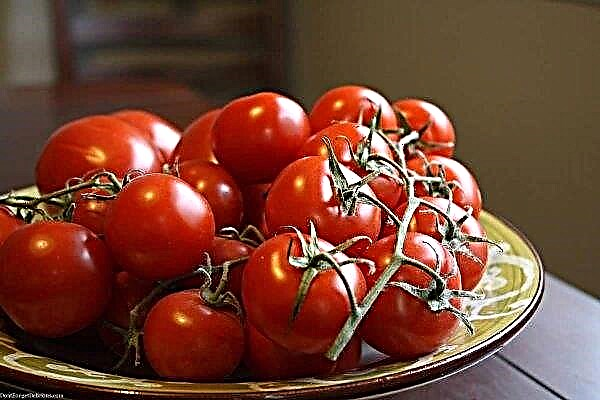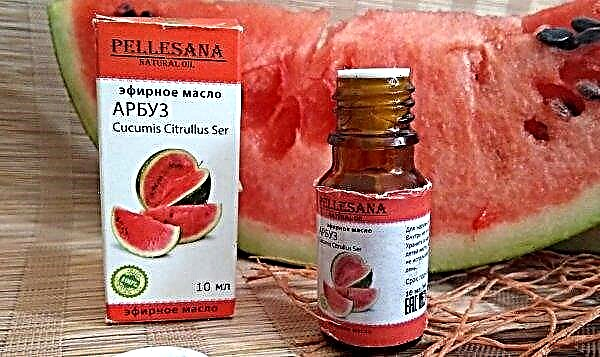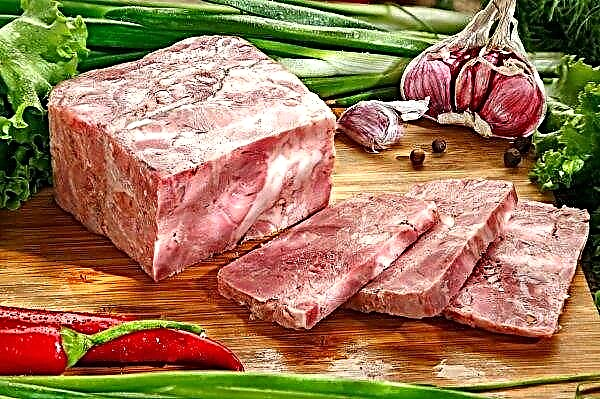The novelty of the Russian selection - the Peter the Great F1 tomatoes - quickly gained demand among summer residents, since they are able to fully satisfy the demands for yield and taste of fruits. Tomatoes of the described variety are excellent for fresh consumption, as well as for the manufacture of preservation. What are the advantages of the variety, and what are the conditions for its cultivation, let's figure it out.
Description and description of tomatoes
Peter the Great is a tomato hybrid of medium early ripening indeterminate type, intended for cultivation on open ground in the southern regions and in greenhouses in the northern stripes of the state. The described tomato variety was developed by Russian breeders and entered in the State Register of Vegetable Crops in 2015. The plant is characterized by high growth intensity, its height is about 1.8–2 m. Bushes are powerful, sprawling, need to be pinched to the growth point and garter. The stems of the culture are a little pubescent, have sparse foliage. The leaves are large, oblong in shape, of a traditional dark green color. Simple inflorescences are formed on each brush in the flowering phase, which, after pollination, are transformed into the ovary and then into the fruit.
The plant is characterized by high growth intensity, its height is about 1.8–2 m. Bushes are powerful, sprawling, need to be pinched to the growth point and garter. The stems of the culture are a little pubescent, have sparse foliage. The leaves are large, oblong in shape, of a traditional dark green color. Simple inflorescences are formed on each brush in the flowering phase, which, after pollination, are transformed into the ovary and then into the fruit.
Each fruit is a oblong-oval-shaped berry, up to 12 cm long and weighing 100–120 g. In ripe form, the fruits have a red or saturated raspberry color. The pulp is quite dense, juicy, with a classic tomato flavor. The peel is hard, smooth, glossy, resistant to cracking and deformation.
The fruits of Peter the Great ripen 100-110 days after the appearance of the first seedlings. Productivity is high: from 1 m², subject to the basic rules of agricultural technology, you can collect 8–9 kg of fruit.Did you know? Red tomatoes in their composition contain more nutrients than yellow. However, the latter are hypoallergenic and are recommended for those people who have allergic reactions to red vegetables.
Pros and cons of the variety
- The hybrid has several key advantages that distinguish it from other varieties of tomatoes:
- good yields;
- excellent esthetic and taste qualities of fruits;
- good shelf life, the ability to transport and long-term storage of tomatoes;
- universal application;
- resistance to verticillous wilting and fungal infections;
- excellent presentation.
- Among the disadvantages of the variety, experienced vegetable growers note:
- the need for mandatory garter bushes;
- some nuances in leaving.
Features of sowing and growing at home
The cultivation of tomatoes Peter the Great begins with the cultivation of high-quality and strong seedlings.
What should be the microclimate
In the northern regions or the middle zone of the state, tomatoes of the described variety are grown exclusively in greenhouse conditions or under film shelter. In the southern regions, plants can be planted in open soil, but yield indicators are significantly reduced.
The variety prefers a rather warm microclimate, with average temperatures in the range + 21 ... + 24 ° С in the daytime and not lower than + 16 ° С in the night. Air humidity should be maintained at 80–85%. The culture also needs to organize a 12-hour daylight. If there is a lack of lighting, it is recommended to install additional light sources, for example, ordinary phytolamps.Important! Since the variety is hybrid, it will not work to obtain high-quality, original seed material from plants cultivated at home.
Sowing technology
Peter the Great belongs to the hybrid varieties of the first type, the seeds of which are almost impossible to obtain on their own. Seed material is recommended to be acquired in specialized markets or agricultural firms.
As a rule, purchased seeds do not need to be disinfected, since producers treat them with special preparations against fungi and viruses. However, before sowing, experts advise to soak the seed in a solution of any growth stimulants or use folk remedies - aloe juice or honey.
Sowing material for seedlings is carried out 60–65 days before the expected date of planting in the ground, approximately in the first decade of March. To grow sprouts, it is necessary to choose universal soil for tomatoes or to prepare the soil mixture yourself, mixing peat, garden soil and river sand in equal proportions.
Hand-made soil must be disinfected with any convenient method:
- calcine in the oven for half an hour at a temperature of + 180 ... + 200 ° C;
- freeze for a day in the freezer;
- shed with a weak solution of potassium permanganate, dry.
The technology of sowing seeds is quite simple and consists of the following steps:
- in prepared containers (plastic boxes, cassettes, peat cups) fill the soil, level;
- in the holes with a depth of 0.5–1 cm, seeds are placed, they are covered with a small layer of soil;
- the soil surface is moistened with warm water from a spray bottle;
- the container with future shoots is covered with a plastic film.
Crop Care
The quality of future seedlings will depend on the features of caring for it. Before the appearance of the first shoots inside the tank, temperature indicators should be maintained at + 23 ... + 25 ° С during the day and about + 18 ° С at night. Be sure to organize a good, diffuse lighting for 12 hours. Watering the seedlings is recommended as necessary, avoiding excessive drying of the soil or waterlogging.
While maintaining comfortable conditions, the first sprouts will appear a week later. During this period, film cover should be removed. When a complete second pair of leaves forms on the seedlings, they can be transplanted into separate containers.
After 2 months, the seedlings are ready for transplanting to a permanent place, but 2 weeks before planting it in the ground, it must be hardened. To do this, the sprouts are taken out to a balcony or to a room with a temperature of + 14 ... + 16 ° C, first for 1-2 hours, then daily increasing the time to a full day. The day before planting, seedlings are left at a given temperature for a day.
Dates and technology of planting seedlings
Experts recommend planting seedlings in the soil after reaching 60 days of age, approximately in the second half of May. The soil in the greenhouse has been prepared since the fall: they dig it up, apply organic fertilizers - rotted manure in a dosage of 1 m² of land - 1 bucket of organic matter, and superphosphate in a proportion of 1 m² - 1 tbsp. l the drug.
Planting seedlings can be done in two ways:- 3 tomato bushes are planted per 1 m² when forming a plant in 2 stems;
- 4 shrubs are planted per 1 m² when forming into 1 stalk.
Tomato Care
Caring for the plant of the described variety includes a number of traditional measures, which include good watering, high-quality top dressing, timely pinching, weeding and loosening of the soil.
Feeding and watering
Since the culture is characterized by high growth intensity, it needs good, plentiful watering, the need for which is determined by drying of the top layer of the soil. When carrying out irrigation procedures, one should focus on the abundance of humidifications, and not on their frequency.
Frequent, but shallow watering contributes to the formation of small root processes that are not able to fully nourish the plant and saturate with the required amount of moisture. Rare, but plentiful hydration contributes to the development of a strong and powerful root system, which can provide bushes with the necessary nutrients and moisture. However, during irrigation, stagnation of water in the soil should not be allowed, as this will lead to rotting of the roots. For moisturizing, you should use settled, cold, soft water.
Important! Watering is recommended in the morning, evening hours or in cloudy weather.
It is equally important to organize a systematic feeding of culture, which is allowed to use organic or complex minerals. Any fertilizer needs to be applied only to moist soil, which is why experts recommend fertilizing combined with irrigation.
Fertilizing for the first time is carried out 10 days after transplanting. To do this, prepare an infusion of bird droppings or mullein and herbs. The concentrated solution is diluted with water in a ratio of 1:10 and watered bushes. One bucket of fertilizer is enough to feed 10–13 bushes. The second portion of fertilizers is applied in the flowering phase of the crop, the third - during the period of fruit formation. In this case, mineral preparations based on potassium and phosphorus are used. At the end of summer, tomato bushes are sprayed with a solution of boric acid, at the rate of 2-3 g per 1 bucket of water.
Pasynkovka and formation of a bush
The formation of bushes is one of the mandatory procedures for the cultivation of Peter the Great. If you ignore this stage, getting a decent crop of high-quality, large fruits will not work.
Plant formation can be carried out in two ways:
- In one stalk. In this case, all lateral shoots are removed, leaving only one main, most powerful stem. Circumcision of the lateral processes is carried out every 10 days after they reach a length of 5-6 cm. In parallel with this, pinch the first flowering brush, which makes it possible to reduce the load on the crop and contribute to better productivity.
- In two stems. With this pattern of formation, the central stem and the strongest lateral process, on which there are at least 5 flowering brushes, are left. The remaining stepsons are regularly removed, every 7-10 days.
As practice shows, the variety shows the best yield results when forming bushes in two stems.
Soil cultivation and weeding
1-2 times a week, experienced gardeners advise loosening the soil, which allows you to:
- saturate the soil with nutrient components and enrich it with oxygen, thereby activating the growth of the root system;
- create favorable conditions for bush growth;
- destroy some pests and larvae of parasites that live on the root processes.

The first loosening with a depression of 8-10 cm is carried out several days after transplanting, the second and subsequent ones, as necessary, at least once every 7 days.
In addition to loosening, a mandatory procedure for caring for tomatoes is weeding weeds, the presence of which inhibits the development of the bush and negatively affects yield. Weeding is carried out regularly, at the first appearance of weeds. It is especially important to destroy parasite plants before they bloom.
To prevent the appearance of weeds, as well as to maintain moisture in the soil, experts recommend covering the soil under the bushes with a layer of mulch - straw, sawdust, hay.
Did you know? Tomatoes contain a unique substance - a powerful antioxidant lycopene, which serves to prevent the formation of cancer cells, and also slows down the growth and development of existing ones.
Growing difficulties
Despite the fact that the variety is quite resistant to many viral and fungal diseases, when it is grown, beginning summer residents may encounter a number of difficulties, which, as a rule, are associated with a violation of the basic rules of agricultural technology. Excessive moisture in the soil, as well as excess fertilizer can lead to damage. late blight, fusariosis, powdery mildew. To combat these ailments, as well as for prevention, modern fungicidal preparations are used, for example, Fitosporin, or folk remedies - Bordeaux liquid.
Against parasites such as slugs, whitefly, aphids, the insecticidal preparations "Actofit", "Pro" or folk remedies - soap or garlic solutions, potassium permanganate, a mixture of pepper and mustard, are especially effective.
Simple preventative measures will help prevent the development of ailments and the appearance of pests:
- crop rotation compliance;
- timely loosening of the soil and the destruction of weeds;
- compliance with the rules of watering and top dressing;
- systematic professional treatment of bushes with biological products.
It is worth noting that the variety is almost never affected by the causative agent of verticillin wilt.
Dates of collection and storage of fruits
Peter the Great refers to plants with a mid-early growing season, the harvest of which begins 100-110 days after the appearance of sprouts. The first fruits can be harvested in August, when they reach the maturity phase. It is allowed to harvest tomatoes in an unripe green form.
Ripe, red-colored tomatoes are recommended to be stored in a cool, dry place at a temperature of + 10 ... + 12 ° C and a relative humidity of 80%. Tomatoes in ripening should be stored in a warm room, where they quickly ripen. Tomatoes have excellent keeping quality and are able to maintain their presentation and useful qualities for several months.
Fruits are characterized by universality in application. They are widely used fresh, for the preparation of salads, appetizers, ketchups, pastas and sauces. Due to their compact form and dense structure, they are considered the most optimal option for the preservation and preparation of various blanks for the winter.
Peter the Great F1 - a hybrid that is distinguished by its excellent presentation of fruits, their excellent shelf life and high palatability. Despite some difficulties in cultivation related to the formation of a bush and pinching, the variety is quite undemanding in care and is able to please with stable high-quality crops even for beginner gardeners.


